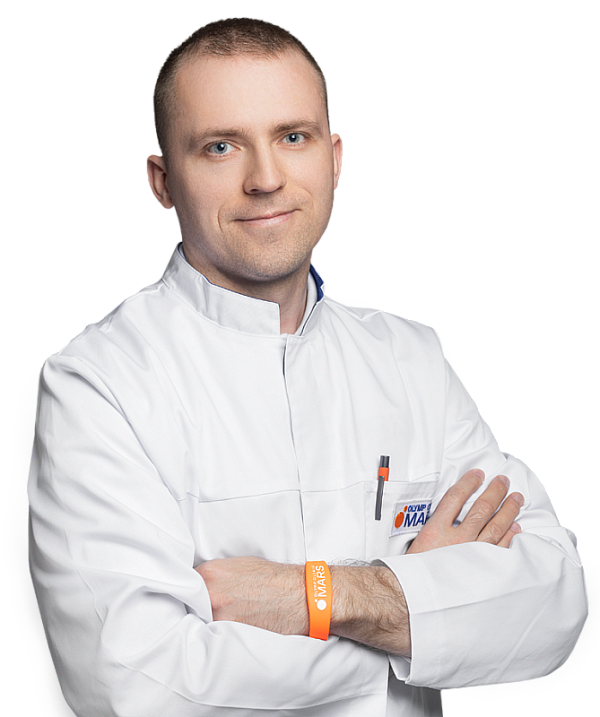Peripheral nerve damage treatment
Microsurgical repair of peripheral nerves after trauma and disease.

Peripheral nerve damage may result from trauma, surgery, prolonged compression, or inflammatory processes. These disorders are often accompanied by pain, sensory disturbances, muscle weakness, and other symptoms. The first step is to determine the extent and nature of the damage, and then select the most effective recovery method.
Decreased nerve function may not be immediately apparent. Sometimes, symptoms develop gradually, especially if the nerve is compressed or partially injured. Surgical intervention is necessary if conduction is impaired and nerve regeneration stalls. Depending on the extent and nature of the damage, it may be necessary to free the nerve from scar tissue or suture it using microsurgical techniques.
The patient undergoes a neurological examination, electrophysiological tests, and imaging procedures. At this stage, the surgeon rules out any additional pathologies and evaluates the patient's overall health. If there are concomitant injuries or infections, they are stabilized first, followed by nerve intervention.
There are several types of intervention involved in the surgical treatment of a damaged nerve. If the nerve is compressed or adhered, neurolysis is performed to release it from scar tissue, restoring its normal position and blood supply. If the nerve is completely torn, it is sutured. The surgeon mobilizes and refreshes the ends of the nerve trunk and sutures them with the nerve bundles aligned as accurately as possible. If suturing is impossible due to tension, a plastic surgery procedure using a graft is performed. All procedures are performed under microscopic control.
We use microsurgical instruments and suture material that's thinner than a human hair. The surgery is done using a microscope.
The patient may be recommended for immobilization during the first few weeks. Once the patient's condition has stabilized, physical therapy, massage therapy, exercise therapy, and electrostimulation will be introduced. Sensitivity and motor function typically return within a few months.
Benefits
High chance of success
With timely treatment, recovery occurs in most cases.
Minimized complications
Modern methods ensure low trauma and proper tissue survival.
Accurate reconstruction
Complete restoration of motor and sensory function is possible.
Function restored
Complete restoration of motor and sensory function is possible.
Врачи
Смотреть всех врачейDoctor of Medical Sciences, Professor. Hand surgeon, orthopedic trauma surgeon, plastic surgeon, microsurgeon. Scientific Director of the Hand and Microsurgery Center. Chairman of the Interregional Public Organization “Hand Surgery Society”
Orthopedic trauma physician, hand surgeon, microsurgeon
Similar referral activities
Hand tendon surgical suturing
Surgical procedure designed to repair damaged tendons and restore finger function.
Trigger finger treatment
Comprehensive treatment of Knott's disease involving surgical intervention.
Lymphatic and venous malformations treatment
Lymphatic and venous malformations are congenital vascular disorders with various symptoms, including pain, swelling, heaviness, and distension. Sclerotherapy and laser treatment are considered the most effective methods of treating such malformations.
Carpal tunnel syndrome treatment
Comprehensive median nerve compression treatment: from diagnostics to restoring hand mobility.
Cherry angioma removal
Cherry angiomas (CA) are benign vascular growths that appear as bright red bumps on the skin. They are usually no more than 5 mm in diameter. They often appear on people over 25 or 30 and are found on the neck, arms, chest, and abdomen.

